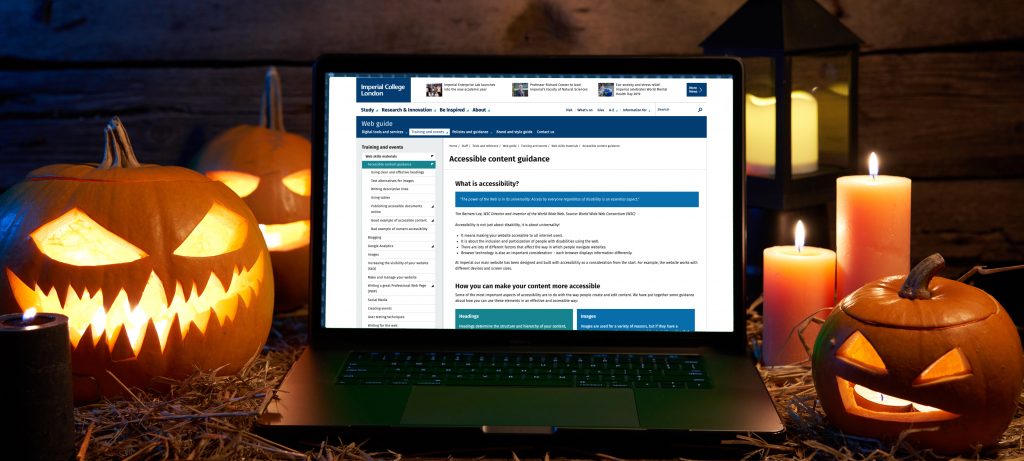Before everyone goes away for a well earned break, I thought I would spoil you with a small gift of five festive themed tips to help you make your web pages more accessible.
Warning: this post may contain puns and tenuous festive references
Before everyone goes away for a well earned break, I thought I would spoil you with a small gift of five festive themed tips to help you make your web pages more accessible.
Warning: this post may contain puns and tenuous festive references
One of the most popular questions I am asked is ‘how do I make my website more searchable?’. With so much of our traffic coming from search engines like Google, Bing and Baidu (other search engines are available!), Search Engine Optimisation (SEO) is really important. So what can you do as an editor to improve how your web pages appear in search results? In this post I will share some tips. (more…)

As you may be aware there were some new digital accessibility regulations that came into force last year called the Public Sector Bodies (Websites and Mobile Applications) (No. 2) Accessibility Regulations 2018. These regulations mean that all public sector bodies (including universities) must ensure websites and mobile applications are more accessible.
There is a project being undertaken to ensure the College fulfils its obligations and to identify those websites and applications that don’t meet the College’s standards.
At the College we aim to meet WCAG 2.1 standards (level AA). Most of these standards are to do with the way that the content is structured and delivered in terms of the underlying code in the templates and content types. If you are using the College’s centrally supported websites (such as T4), then most of these things are out of your control as an editor. But, there are some things that are in your control such as how you add images, links and other content to your pages.
With Halloween fast-approaching I thought I would ease any fears and share some tricks and treats to show you how easy it is to improve your content.
The summer was been a busy period for the Digital team. We have been working with a number of teams to launch new or updated websites in time for the new academic year.
So, as the nights draw in and the temperatures fall, I want to share the good examples I recall.
(more…)
Google Analytics is a very powerful tool which tracks how people interact with the pages they visit, this includes:
and much much more.
Google Analytics records hundreds and hundreds of types of information that you can combine to build a picture of how people use our websites. Having access to all this data can be overwhelming and most of you won’t have the time (or patience) to trawl through it all. We just need a few pieces of information to help us understand how our site is performing.
In this post I’ll explain some of main metrics to look out for and how you should interpret these to inform your content decisions. (more…)